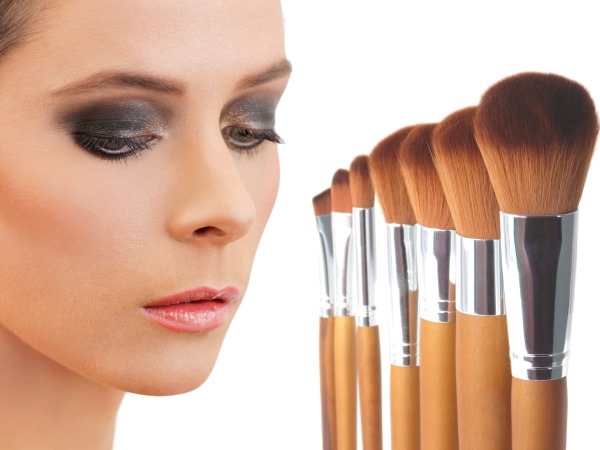Makeup entrepreneur Kylie Eustace explains why she decided to go fur free when she launched her own professional makeup brush line.
“The brushes we use can make a tremendous difference on the results of makeup application,” says beauty professional and founder of Kylie’s Professional makeup line, Kylie Eustace.
Though Eustace spent many of her early years working with conventional animal fibre brushes, the makeup professional made the decision to launch her own line of cruelty free vegan makeup brushes after repeatedly coming up against clients whose sensitive skin reacted poorly to the brushes she’d been taught to use.
“Traditionally, makeup artists have used animal hair brushes and were even taught that synthetic brushes were terrible quality and not to use them,” says Eustace.
“But animal hair is porous and absorbs moisture and bacteria. Even regularly washed animal hair brushes can hold dirt or bacteria that hides within the cuticles of the hair. Many women with sensitive skin are allergic to the bristles which can also be spikey on the skin, irritating it further.”
And while synthetic hair brushes have been typically considered for at-home use by beauty consumers on a budget, Eustace says public opinion is shifting.
“Times are changing and the quality of synthetic brushes has evolved with some exceptional quality brushes now available. Technology has become superior with the quality of synthetic fibre better than ever.”
More importantly, says Eustace, synthetic brushes have innate benefits when it comes to working with clients with skin sensitivities and allergies.
“Synthetic bristles actually repel dirt and bacteria, so product doesn’t absorb into the hair, making them more hygienic and suitable for a wide variety of skin types.”
The biggest turning point for Eustace, however, came when she learned where the bristles for the traditional animal hair makeup brushes she had been using came from. Typically sourced from squirrels, badgers, minks, sables, horses and goats, much of the farming which has now been associated with cruelty is involved in makeup brush production.
According to animal activist organisation, Peta, every year, millions of animals are “trapped, drowned, and beaten to death in the wild and strangled, electrocuted, or beaten and skinned alive on fur farms”.
“Mink and sable brushes often use hair that comes from the fur industry, which is known for trapping and killing animals for their fur, often by gassing or electrocuting to avoid damaging the hair. There’s little legislation over it. Some manufacturers obtain their hair supplies from countries where animal welfare regulations are nearly non-existent,” emphasises Eustace.
And while Eustace certainly has a lot to gain from promoting the cruelty free products she’s based her business on, she says the major motivator for her is helping educate the next generation of beauty consumers to make more ethical, educated purchases that mean a win for manufacturers as well as animal welfare.
Have your say: Do you think clients really care if their brushes are made from non-ethical sources?
2 thoughts on “An MUA Explains: Why I Went Fur Free”
Leave a Reply
You must be logged in to post a comment.



I will NOT use animal hair brushes! Cruelty Free all the way!
hear hear! Agreed.